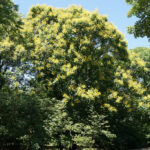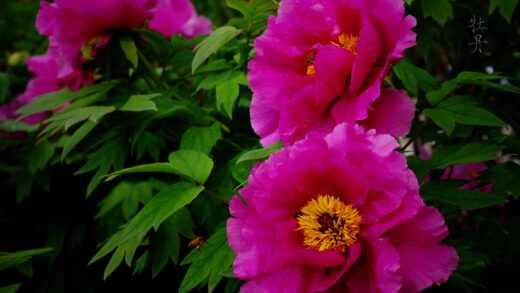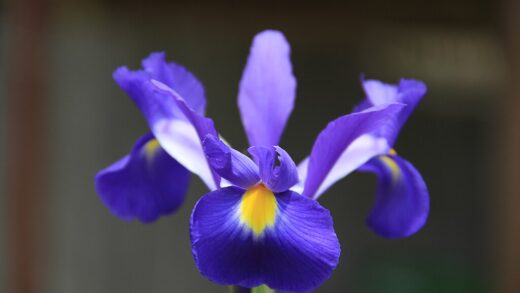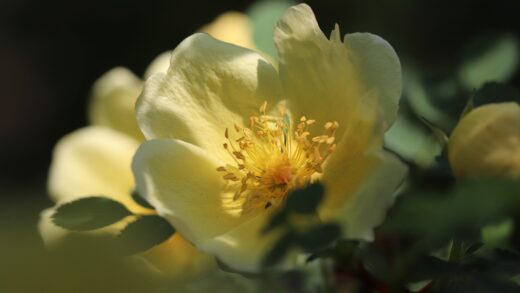The Taiwanese toad lily, with its orchid-like, speckled flowers, is a true gem for the late-season garden, offering an exotic touch when most other perennials are beginning to fade. Successfully cultivating this plant requires an understanding of its native woodland habitat, which dictates its preferences for moisture, soil, and light. Proper care ensures not only vigorous growth and a profusion of its unique blooms but also the long-term health and resilience of the plant. This involves a holistic approach, considering everything from its initial placement in the garden to its ongoing needs throughout the changing seasons. By mimicking its natural environment, you can create the ideal conditions for this captivating perennial to thrive and become a standout feature in your shaded garden spaces.
Caring for the Taiwanese toad lily begins with selecting the right location, a decision that will profoundly impact its overall health and flowering performance. This plant thrives in conditions that replicate the dappled light of a woodland floor, making it an excellent choice for shady or semi-shaded areas of the garden. An ideal spot would be under the canopy of deciduous trees, where it receives protection from the harsh midday sun but is still exposed to gentle morning light. Direct, intense sunlight, especially during the afternoon, can scorch the leaves, leading to brown, crispy edges and stressing the plant, which can inhibit flower production. Therefore, thoughtful placement is the foundational step to successful cultivation and a stunning autumn display.
The soil composition is another critical factor in the successful care of the Taiwanese toad lily. It prefers consistently moist, yet well-draining, soil that is rich in organic matter. Heavy clay soils that retain excessive water can lead to root rot, a fatal condition for this species. Conversely, sandy soils that drain too quickly will not provide the sustained moisture the plant needs. To create the perfect growing medium, amend your native soil with generous amounts of compost, leaf mold, or well-rotted manure. This not only improves soil structure and drainage but also provides a slow-release source of essential nutrients, closely mimicking the humus-rich floor of its native forest habitat.
Maintaining consistent moisture is paramount throughout the growing season, particularly during dry spells in late summer as the plant is preparing to bloom. While the Taiwanese toad lily dislikes waterlogged conditions, it is equally intolerant of drought. The soil should be kept evenly moist, feeling like a well-wrung-out sponge. Applying a two to three-inch layer of organic mulch, such as shredded bark or leaf compost, can be incredibly beneficial. Mulching helps to conserve soil moisture by reducing evaporation, suppresses weed growth that would otherwise compete for resources, and keeps the root zone cool. As the mulch breaks down over time, it further enriches the soil with organic matter.
Beyond the primary needs of light, soil, and water, ongoing maintenance plays a role in keeping your Taiwanese toad lily looking its best. This includes monitoring for any potential pest or disease issues, although the plant is relatively resilient. Deadheading, or the removal of spent flowers, is generally not necessary for this species as it does not significantly promote reblooming within its short flowering window. At the end of the season, after the first hard frost has caused the foliage to die back, the stems can be cut down to the ground. This tidies up the garden bed and helps to reduce the chances of overwintering pests or diseases in the decaying plant material.
More articles on this topic
Understanding the plant’s lifecycle
The annual lifecycle of the Taiwanese toad lily is a journey of gradual emergence and a spectacular late-season finale. In the spring, as soil temperatures rise, new shoots emerge from the underground rhizomes. These shoots grow steadily throughout the spring and early summer, developing into arching stems adorned with glossy, lance-shaped leaves. During this vegetative growth phase, the plant is building up the energy reserves it will need for its flowering period. It is crucial to provide consistent moisture and nutrients during this time to support the development of a robust and healthy plant structure.
As summer progresses, the plant continues to mature, with its foliage providing a lush green texture to the shade garden. By late summer, the first signs of flower buds will begin to appear in the leaf axils, particularly towards the tips of the arching stems. This is a critical period where any stress, especially from drought, can negatively impact the quantity and quality of the flowers. The anticipation builds as the buds slowly swell, promising the intricate display to come. This pre-flowering stage is when the plant’s energy is fully directed towards reproduction, making consistent care more important than ever.
The true spectacle begins in late summer and extends into the autumn, a time when many other garden plants are past their prime. The Taiwanese toad lily bursts into bloom, with its distinctive, star-shaped flowers creating a captivating display. Each flower, typically white or pale lilac with intricate purple or reddish-brown speckles, is a work of art. The flowering period can last for several weeks, providing valuable color and interest in the autumn landscape. This late bloom time also makes it a valuable nectar source for pollinators that are still active late in the season.
Following the flowering period and the first hard frosts of late autumn, the plant begins to enter dormancy. The leaves and stems will turn yellow, then brown, and eventually die back completely. This is a natural process as the plant retreats its energy back into the underground rhizomes to survive the winter. Once the foliage has fully died back, it can be cut down to the ground level. The rhizomes will remain dormant beneath the soil, resting and preparing for the cycle to begin anew the following spring, ready to send up fresh shoots and grace the garden once again with its unique beauty.
More articles on this topic
Seasonal care requirements
Spring care for the Taiwanese toad lily is focused on supporting its emergence and early growth. As the ground thaws and new shoots begin to poke through the soil, it is an ideal time to apply a fresh layer of organic mulch around the plant. This mulch will help retain the moisture from spring rains and suppress the early growth of weeds. If you did not amend the soil in the autumn, spring is also a good time to gently top-dress the area around the plant with a layer of compost or well-rotted manure, providing a slow-release source of nutrients to fuel its initial growth spurt. Be careful not to damage the delicate emerging shoots during this process.
During the summer months, the primary focus of care shifts to maintaining consistent moisture and monitoring the plant’s health. This is the period of active vegetative growth where the plant develops the stems and foliage that will support the autumn flowers. In regions with hot, dry summers, regular watering will be essential to prevent the soil from drying out completely. Check the soil moisture every few days, and provide a deep, thorough watering when the top inch of soil feels dry. This is also a good time to be vigilant for any signs of pests like slugs or snails, which can be attracted to the lush foliage in a moist, shady environment.
Autumn is the season when the Taiwanese toad lily truly shines, and care should be focused on maximizing its flowering display and preparing it for winter. Continue to provide consistent water, especially if the weather is dry, as drought stress during the budding and flowering phase can lead to fewer or smaller blooms. Once the flowering display is finished and the first hard frost has blackened the foliage, the plant is signaling its transition into dormancy. This is the time to perform the final cleanup of the season. Cut the dead stems and foliage back to the ground to maintain garden hygiene and reduce overwintering sites for potential pests.
Winter care is relatively straightforward, as the plant is dormant. The main goal is to protect the underground rhizomes from extreme cold and freeze-thaw cycles, particularly in colder climates or in gardens with less reliable snow cover. After cutting back the foliage in late autumn, ensure there is a healthy two to three-inch layer of mulch over the root zone. This mulch, which could be composed of shredded leaves, pine needles, or bark chips, acts as a protective blanket, insulating the rhizomes from temperature fluctuations. This simple step is often all that is needed to ensure the plant survives the winter and returns with vigor the following spring.
Common care mistakes to avoid
One of the most frequent mistakes in caring for the Taiwanese toad lily is improper siting, specifically planting it in too much direct sun. Gardeners are often tempted by its beautiful flowers to place it in a more prominent, sunnier location, but this is detrimental to its health. The plant’s foliage is not adapted to handle the intensity of direct afternoon sun, which will invariably lead to leaf scorch, characterized by brown, dried-out patches and crispy edges. This not only ruins the aesthetic appeal of the plant but also weakens it, making it more susceptible to other issues and reducing its flowering potential. Always prioritize a location with partial to full shade.
Another common error is inconsistent or improper watering. The Taiwanese toad lily requires soil that is consistently moist but never waterlogged. It is easy to either overwater or underwater this plant. Overwatering, or planting in heavy, poorly draining soil, creates an anaerobic environment that suffocates the roots and inevitably leads to root rot, which is usually fatal. On the other hand, allowing the soil to completely dry out, especially during the crucial late summer period when buds are forming, will cause significant stress, resulting in wilting, bud drop, and a severely diminished floral display. The key is balance: deep, infrequent watering is better than shallow, frequent sprinkling.
Neglecting soil preparation is a mistake that can hinder the plant’s performance for years to come. Simply digging a hole and placing the plant in unamended, compacted, or nutrient-poor soil sets it up for failure. The Taiwanese toad lily is a woodland plant that thrives in soil rich with organic matter. Failing to amend the planting site with compost, leaf mold, or other organic materials deprives the plant of the nutrients and soil structure it needs to establish a strong root system. Poor soil leads to stunted growth, sparse foliage, and lackluster flowering, preventing the plant from ever reaching its full potential.
Finally, a less obvious but still significant mistake is overcrowding the plant. While Taiwanese toad lilies look beautiful planted in drifts, they need adequate air circulation to remain healthy. Planting them too closely together or surrounding them with aggressive, fast-spreading neighbors can create a humid microclimate around the lower leaves. This lack of airflow makes the plant more susceptible to fungal diseases, such as botrytis or powdery mildew, especially in damp, shady conditions. When planting, give each plant enough space to mature to its full size, ensuring that air can move freely through its foliage.
Benefits of proper care
Providing the Taiwanese toad lily with proper care yields the significant reward of a spectacular and extended late-season floral display. When the plant’s needs for shade, moist and rich soil, and consistent water are met, it will produce an abundance of its intricate, orchid-like flowers. This bloom occurs from late summer through autumn, a time when many other perennials have finished flowering and the garden can start to look tired. A healthy toad lily becomes a focal point, injecting vibrant color and exotic beauty into the landscape when it is most needed, extending the gardening season and providing a final flourish of interest before winter.
Proper care also leads to the development of a strong, healthy, and resilient plant. A well-tended toad lily will establish a robust rhizomatous root system, which is the engine of the plant. This strong foundation allows it to better withstand environmental stresses, such as occasional dry spells or temperature fluctuations. It also makes the plant more vigorous and better equipped to resist common pests and diseases, reducing the need for chemical interventions. Over time, a healthy plant will form a lush, attractive clump of foliage that serves as a beautiful ground cover even before the flowers appear.
A significant benefit of cultivating a healthy Taiwanese toad lily is the ease with which it can be propagated. A vigorous, well-cared-for plant will spread via its rhizomes, gradually forming a larger clump over the years. This provides an excellent opportunity for gardeners to divide the plant and create new ones for other parts of the garden or to share with fellow enthusiasts. Division, which is best done in the spring, is a simple process that is much more successful with a healthy parent plant. Thus, good care practices are an investment that literally pays dividends in the form of more plants.
Finally, a thriving Taiwanese toad lily contributes positively to the garden’s ecosystem. Its late-season blooms provide a crucial source of nectar for late-flying pollinators, such as bees and hoverflies, at a time when other food sources are becoming scarce. By supporting these beneficial insects, you are contributing to the overall health and biodiversity of your local environment. A well-cared-for garden, featuring plants like the toad lily, becomes more than just a collection of beautiful objects; it becomes a living, functioning ecosystem that supports a variety of wildlife.
Troubleshooting common problems
If you notice the leaves of your Taiwanese toad lily developing brown, crispy edges, the most likely culprit is sun scorch. This is a clear indication that the plant is receiving too much direct sunlight, particularly in the hot afternoon. While you cannot repair the damaged leaves, you can prevent further harm by moving the plant to a shadier location. The best time to transplant is in the early spring, just as new growth is emerging. If transplanting is not an option, consider creating artificial shade with taller plants or a temporary shade cloth during the hottest part of the day to protect the delicate foliage.
A general lack of vigor, stunted growth, or a sparse flowering display often points to a problem with the soil. If your toad lily is failing to thrive, evaluate the soil conditions. The plant may be suffering from a lack of nutrients or poor soil structure. You can remedy this by top-dressing the area around the plant with a generous layer of high-quality compost or leaf mold. This organic matter will gradually improve the soil’s fertility and texture as it breaks down. For a more immediate boost, you can apply a balanced, slow-release granular fertilizer in the spring, but improving the soil with organic matter is the best long-term solution.
Wilting foliage can be a sign of two opposite problems: either underwatering or overwatering. To diagnose the issue, feel the soil around the base of the plant. If the soil is bone dry several inches down, the plant is thirsty and needs a deep, thorough watering immediately. However, if the soil is soggy and waterlogged, the wilting is likely due to root rot, where the roots are suffocating and can no longer absorb water. In this case, watering more will only worsen the problem. You may need to carefully dig up the plant, trim away any black, mushy roots, and replant it in a location with better drainage or in soil that has been heavily amended with organic matter to improve its structure.
The sudden disappearance of leaves or the presence of ragged holes and slime trails are telltale signs of slug or snail damage. These pests are particularly fond of the moist, shady conditions where toad lilies thrive and can cause significant damage, especially to young plants. To combat them, you can employ several strategies. Hand-picking the pests off the plants at night or on damp mornings can be effective in small gardens. You can also create barriers with crushed eggshells or diatomaceous earth around the plants, or use commercially available, pet-safe slug baits. Encouraging natural predators like birds, toads, and ground beetles in your garden will also help to keep slug and snail populations in check over the long term.


















